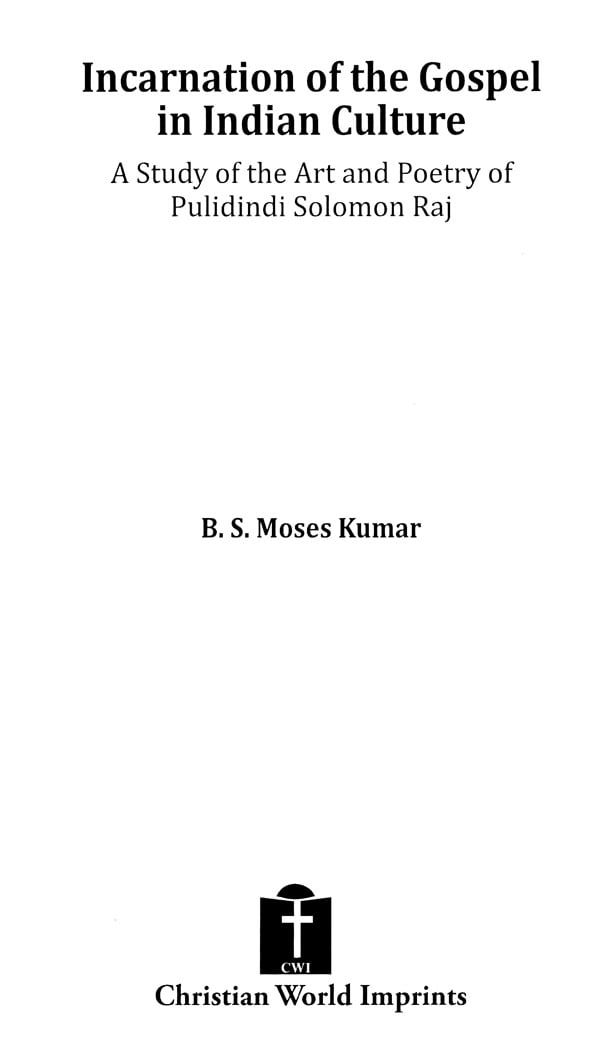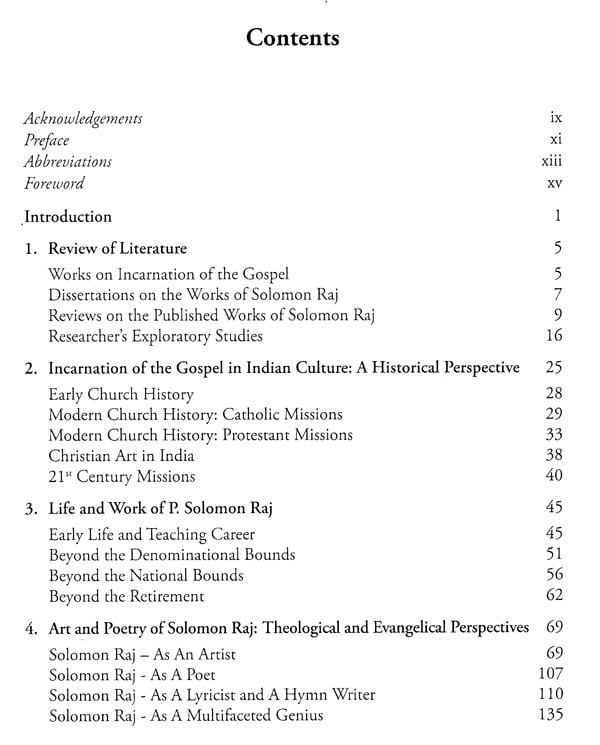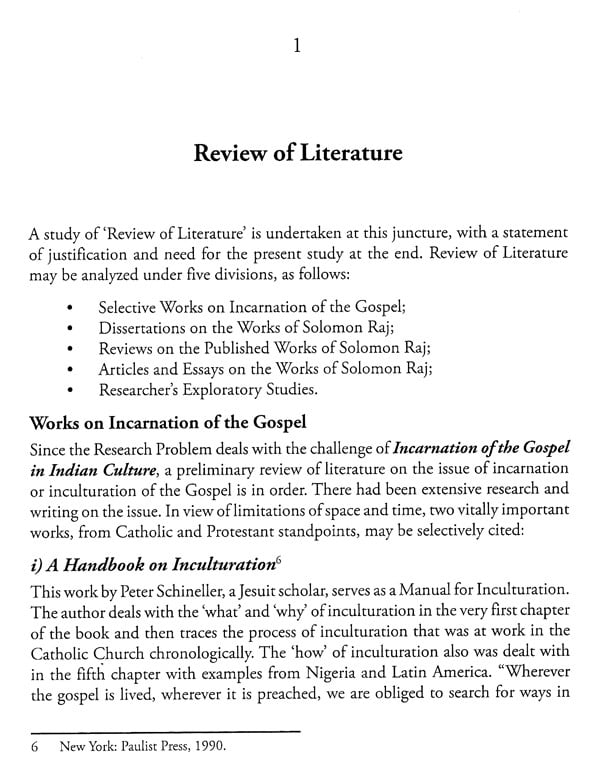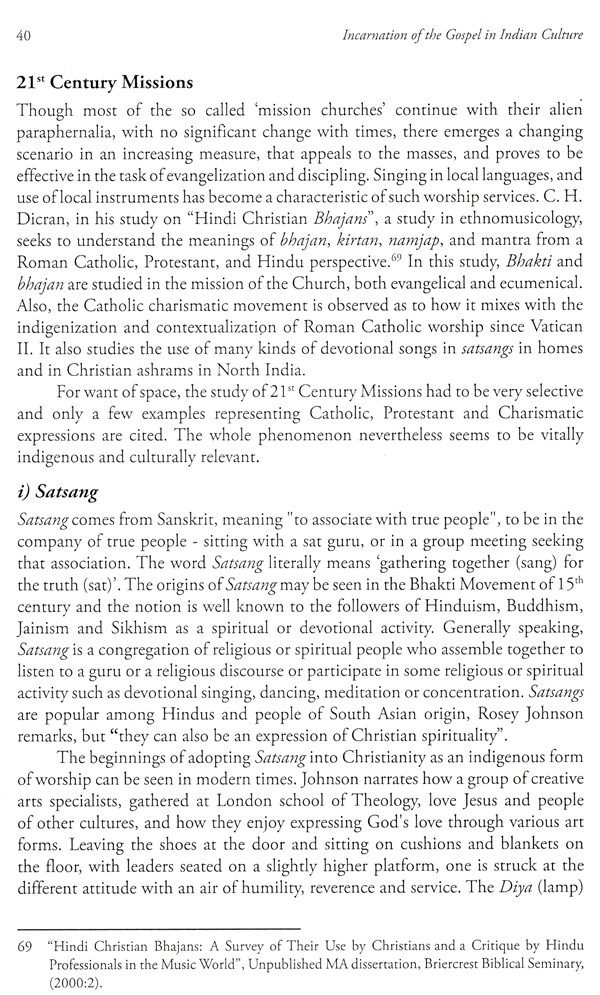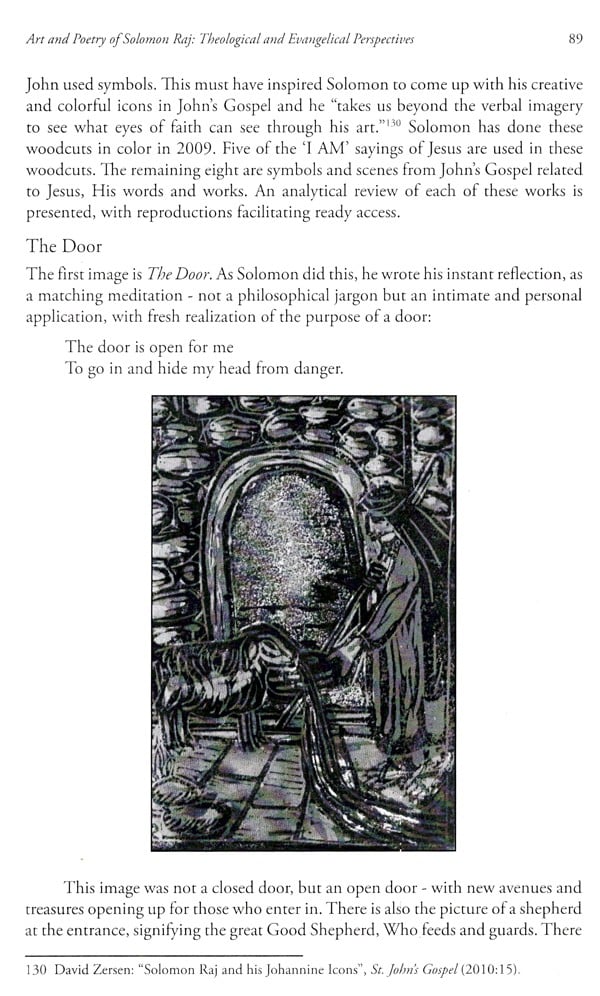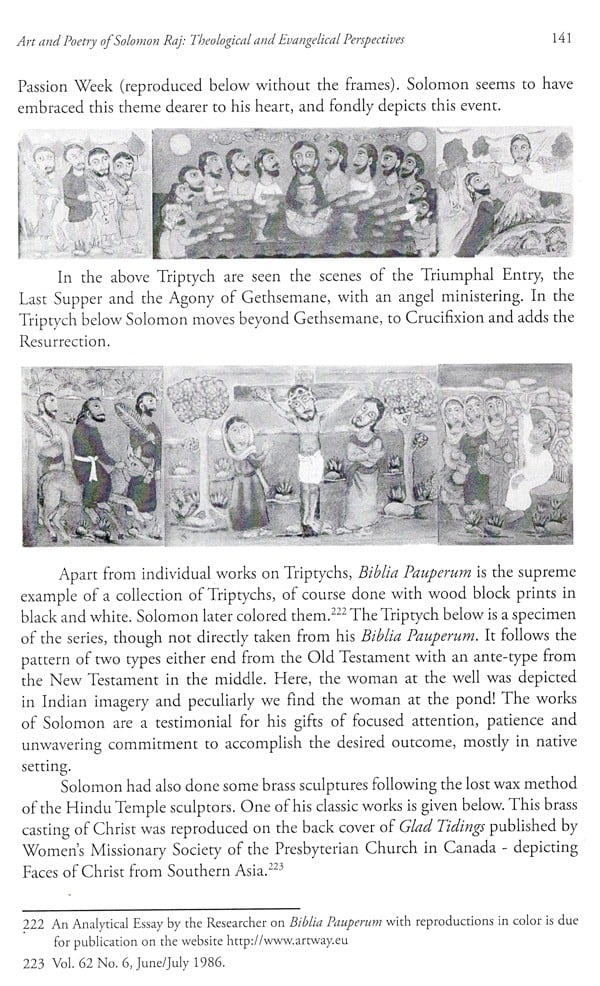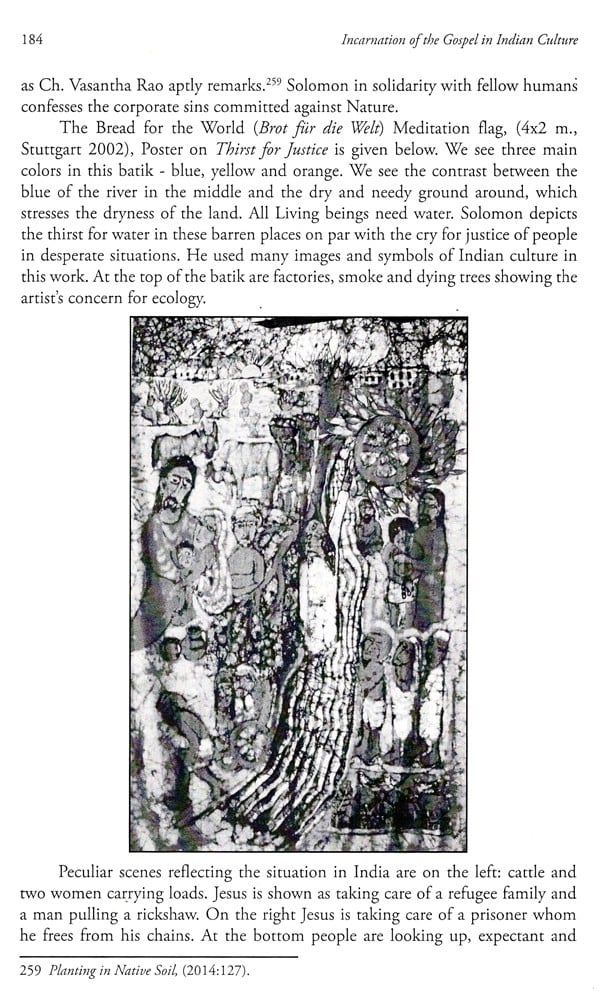
Incarnation of the Gospel in Indian Culture (A Study of the Art and Poetry of Pulidindi Solomon Raj)
Book Specification
| Item Code: | UAZ453 |
| Author: | B. S. Moses Kumar |
| Publisher: | Christian World Imprints, Delhi |
| Language: | English |
| Edition: | 2019 |
| ISBN: | 9789351483670 |
| Pages: | 254 (Throughout B/w Illustrations) |
| Cover: | HARDCOVER |
| Other Details | 9.50 X 6.50 inch |
| Weight | 610 gm |
Book Description
The dynamics of cross-cultural communication of the Gospel brings to the fore the challenge of adapting to the host culture rather than imposing one's culture in order to be relevant and meaningful. The modern missionary movement resulted in an inflow of missionaries from many different denominational persuasions from the West into all the nations of the world including India, and they invariably delivered their cultural baggage along with the Gospel. The Gospel in a 'western garb' is not readily received but rejected or criticized by a majority of the population. D. T. Niles lamented: "The Gospel came to us as a potted plant. We have to break the pot and set the plant in our own soil".
Incarnation of the Gospel in Indian Culture' is to present the Gospel by means of relevant and meaningful communication processes in our own cultural mediums. An analytical study of this issue is made here in this work with A Study of the Art and Poetry of Pulidindi Solomon Raj. Solomon's manifold works of art and poetry provide a conspicuous example for this process. Can the Gospel be presented in Indian context through the art and culture of Solomon Raj? This is not an exhaustive study, but attempts to be a reliable source-book that aids further research.
B. S. Moses Kumar hails from Maruter, South India. A triple graduate, he obtained a couple of Masters and a couple of earned Doctorates in English and Theology. A Pastor in a couple of rural congregations for a decade, he pioneered and planted a thriving church in Hyderabad, where he lives with his wife, Dora at Donald Ashram.
He served the denomination in various capacities and as Field Superintendent for India at national level. Presently he is serving as General Superintendent and Presiding Bishop of IPHC Ministries: South India.
Author of Setting Stones, and The Religious Poetry of Gerard Manley Hopkins: A Theological Perspective. We, The Church: Studies in Mission and Evangelization was the Festschrift in his honor, celebrating 40 years of ministry. The present work is an adaptation of his doctoral dissertation for Ph.D. in Theology with SHUATS, Allahabad.
A rural, illiterate family in Godavary delta area of the State of Andhra Pradesh in South India was visited by the light of the Gospel through the advent of Lutheran Missionaries in the late nineteenth century. Besides being transformed by this light, God in His providence had ordained that the impact of this family would touch the ends of the globe through one of the sons of this family. The present research about this saga has been a delightful exercise and a pleasant experience all along, and one cannot but wonder 'how great is our God! The author deems it a rare honor to have studied the depths of His grace, richly manifested in the history of this family, and in the life of P. Solomon Raj who hails from this family.
The story begins with Pulidindi Abraham, who was the first generation Christian of Neggipudi village. Father Abraham had two sons - Pulidindi Lazarus and Pulidindi Prakasam. Of the two, Prakasam had higher education having graduated in Agriculture from Coimbatore. Obviously he was the first graduate from among this tiny village. He had two sons, both well educated. The eldest son lives with family in the U.S.A., and the other one in the motherland.
Pulidindi Lazarus was a schoolteacher and his wife Naomi was a Bible Woman of those days, promoting non-formal Christian education among the rural masses through story and song. Lazarus also had two sons, Solomon Raj and Aaron, but he was first blessed with a daughter by name Krupavathy. A son named Asheerwadam who was the second issue, and a daughter named Lily Elizabeth the last issue, did not survive beyond infancy and early childhood. The three who survived had become schoolteachers in the manner of their father. But Solomon Raj had ascended to greater heights gradually not only obtaining higher education overseas, but ultimately imparting education to many in turn, overseas. Whereas his siblings had never crossed the boarders of their State, Solomon was destined to cross even the national boundaries touching all the continents, except of course, the land 'down under'. One of his grand daughters, however, now lives in Australia, and one of his grandsons now works in Illinois, the State where Solomon had his post graduate studies in graphic arts in the USA.
Presenting the Gospel to contemporary society has been a challenge to mission workers through the centuries. With the resurrection experience of Jesus, the disciples of the Lord took it upon themselves to preach the Gospel, moving in every possible direction and reaching out to the many lands and the languages. The hardships never mattered. This is one side of the scenario.
Much later, 16th and 17th centuries witnessed the advent of the missionary movement with a deep urge and a sense of urgency to take the Gospel to every habitation on the earth. The denominational churches and mission societies dared to travel to the nations of the world and planted churches and service centres, largely unmindful of the local art, culture and the dialect.
Leading people to the saving Grace was deemed to be such a sacred privilege that nothing else mattered. The Gospel was passed on with the meaning and scope of the culture it belonged to. Thus the Gospel was presented as a potted plant. In some cases it grew rooted in the local soil; and in many cases, it grew in the un- melted pot sustaining its home culture. The theologians, Gospel activists and men of God became conscious of this unintended consequence, where the potted plant churches with no relevance to their local culture, art and dialect.
grow Opening the minds and hearts to the Pentecost experience, we see how one message reached many languages, each being able to understand in his/ her own setting with nothing alien whatsoever. Here was a clear paradigm shift for the Gospel to be preached culture-conscious. Several early church fathers in every denomination have become conscious of this fact and made a beginning to understand and appreciate the significance of local art, culture and dialect in the Gospel work. The notion of a Christian culture was set aside because, into every culture penetrates the Gospel of Jesus and should thus be seen, heard and experienced.
The Gospel or the Good News of God for humans was personified in the life and work of Jesus Christ. The Great Commission of Jesus Christ, as recorded by the Gospel writers' is to go 'Into all the world' and preach it "To all the creation! This mandate is for all His disciples until 'the end of the age. Jesus includes everyone, everywhere in the great host of recipients of the Gospel, and therefore the Church in all times is given the awesome responsibility of heralding the Gospel to every generation. The 'whosoever' dimension of the Gospel envisages embracing of recipients from across the multi-ethnic globe, irrespective of creed, color, culture or nationality. As such, it is obvious that the Gospel transcends and transmits into all cultures.
The dynamics of cross-cultural communication of the Gospel brings to the fore the challenge of adapting to the host culture in order to be relevant and meaningful, rather than imposing one's culture upon the recipient culture. The modern missionary movement resulted in an inflow of missionaries from many different denominational persuasions from the West into all the nations of the world including India, and they delivered their cultural baggage along with the Gospel. The scandal of the Gospel in a 'western garb' - with western clerical robes and ritual, liturgy and hymnal with western music, and western art and architecture in relation to places of worship had been a hindrance to the natives curtailing ready acceptance. D. T. Niles, the Sri Lankan evangelist, laments: "The Gospel came to us as a potted plant. We have to break the pot and set the plant in our own soil."
**Contents and Sample Pages**
